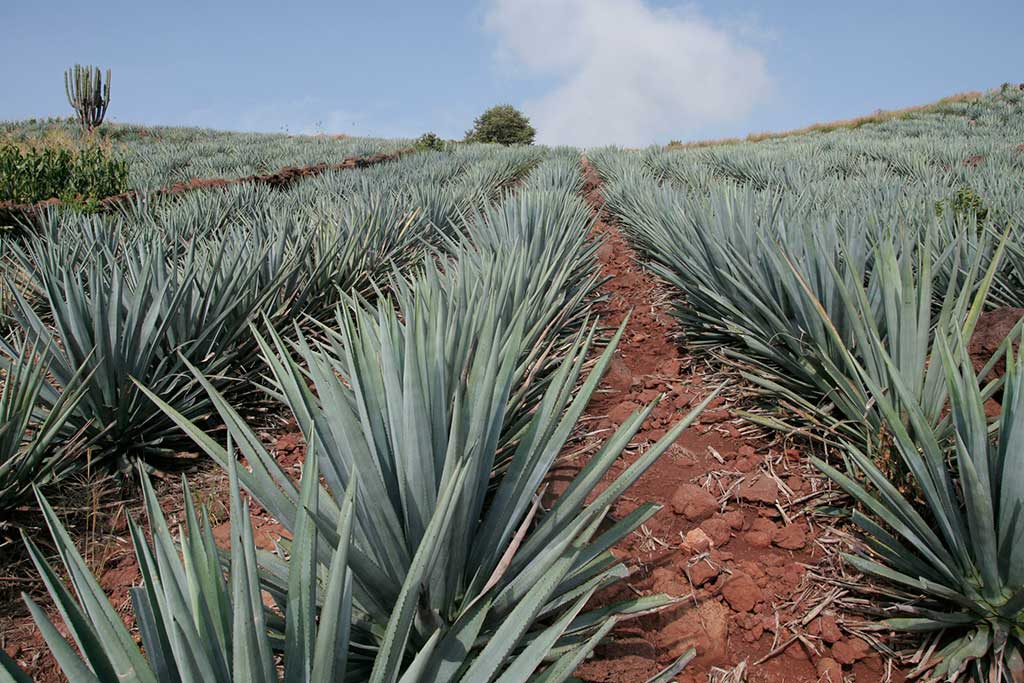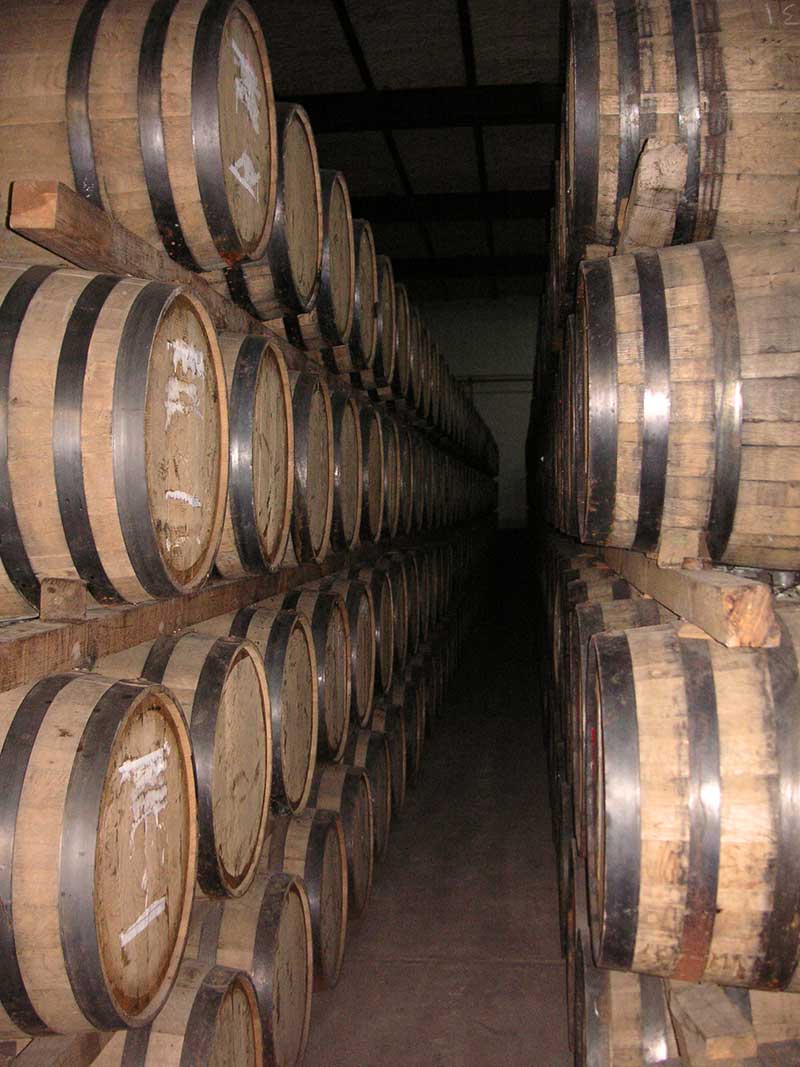How Tequila Compares to Bourbon
For many of us, tequila is more associated with slamming back shots and decisions we regret the next morning than with enjoying the flavor of a fine barrel-aged spirit. But Cinco de Mayo is a great opportunity to learn more about this surprisingly complex spirit.

For many of us, tequila is more associated with slamming back shots and decisions we regret the next morning than with enjoying the flavor of a fine barrel-aged spirit. But Cinco de Mayo is a great opportunity to learn more about this surprisingly complex spirit. Bourbon lovers may find that there is more that they can appreciate about tequila than you might expect.
First the basics. Tequila is made from the blue agave plant. If you think waiting for bourbon to age is a long process you should know that the blue agave plant takes 8-10 years to mature to the point where it can even be harvested. Some people like to say that tequila is aged in the plant, not in the barrel. The leaves are then stripped away, and the core is roasted and milled to begin the fermentation process. Most tequilas are distilled twice, and the best ones don’t do more than that because the product loses too much flavor.

The production of tequila is governed by strict rules known as the NOM (Norma Oficial Mexicana). In addition to requiring that tequila be produced in one of five Mexican states, it also regulates aging and additives. Tequila often gets a bad reputation because of these additives and lack of purity, but the NOM does an excellent job of protecting consumers who know what to look out for when buying tequila.
There are two kinds of tequilas. 100% blue agave and “mixtos.” Mixtos must be at least 51% blue agave, but the rest can be other types of sugar. These cheaper tequilas are often the ones responsible for those terrible headaches. If your bottle of tequila does not say 100% de agave on it, then you have a mixto.

After the tequila is produced, there are several levels of aging that the NOM stipulates. Blanco is bottled immediately and is often called silver in the United States. After the unaged versions, we get to the barrel aged. Compared to bourbon, tequila makers have a lot of creative control when it comes their barrels. Although new barrels are allowed, most tequila is aged in used white oak barrels. American Whiskey barrels are the most common, especially Jack Daniels, but Canadian barrels are frequently used as well. Sherry, brandy, and cognac barrels from Europe make their way into the mix regularly. Reposado or ‘rested’ is aged for two months to a year in a white oak barrel. Añejo is left in the barrels for a year to three years. The latest designation, added in 2006, is Extra Añejo, which must be aged at least three years. But when it comes to tequila, older is not always better. Tequila is rarely aged more than four years. After that, it begins to lose much of the agave flavor that makes it tequila and begins to taste more like whiskey. Not that there is anything wrong with whiskey, but why would you bother cultivating an agave plant for ten years to make something that tastes like a grain product?
Unlike bourbon, tequila makers can reuse barrels. One common approach is to use a newer barrel for the reposado and then reuse that same barrel for an añejo batch. Barrels can be reused several times and sometimes a producer will even re-char a very used barrel to give it an extra boost when the flavor is gone.
In addition to these aging options, tequila makers can also use the oro, or gold, designation. An oro tequila is a blanco with coloring or flavoring added to mimic the look or taste of aging. As you might expect, these often use mixtos as the base tequila. For best quality avoid the oro designation. One exception is if says 100% de agave. This product, sometimes called joven, is made from blending blanco and reposado.
Most tequila is a blend of several barrels. Because most tequila distilleries reuse barrels, sometimes up to nine times, blending is necessary to get consistent flavor profiles. A higher quality type of tequila you might see is reserva de casa or reserva de la familia. These are not a NOM regulated designation, but they often indicate a premium or limited production variety.
Following the popularity of single barrel whiskey, some tequila distilleries have started offering single barrel tequila, usually an extra añejo. But remember, this designation is not regulated, and barrels are often reused. You will have to trust that the tequila distillery truly means that their product all comes from one use of that barrel, and not from all of the uses.
One interesting tip I learned while researching this article was to look for the NOM number, which is like a DSP number. Every bottle of tequila is labeled with a number that indicates which distillery it came from. That means that if you are holding two bottles of tequila that are the same age and have the same NOM number, but one is twice as expensive as the other, the main difference between the two is marketing. I can only imagine what would happen if all bourbon was required to be labeled in a similar fashion but I have to admit I would love to see it. Although bourbon producers can brag about the integrity of a product with strict rules against adding flavoring or coloring, there is no requirement that you tell customers where the product you are buying comes from. So much of the cat and mouse game between producers and consumers in the bourbon world would be ended overnight.
Tasting tequila is very similar to tasting whiskey. You will pour, sniff, and sip the same way you try a bourbon. One difference is that there is usually less finish. Quality tequila is very smooth compared to quality whiskey. In tequila, the flavor comes from the agave, the barrels, the yeast, and even the water. Unlike whiskey, you will get a lot more flavor in the unaged version of this spirit. A blanco will have the authentic flavors of the agave. They are usually sweet and frequently have a mint or citrus flavor to them. As they age the tequila gets more flavor from the barrel, getting hints of caramel, baking spices, and honey that will be familiar to the bourbon drinker but no matter the age, the flavor of the agave should always come through.
Tequila may not win over the bourbon lover quickly. The flavor is very different. Much of the round, buttery, caramels are missing, and the spiciness is an entirely different animal than what you find in bourbon. More mint and floral than cinnamon and tobacco. But if you appreciate the tradition, dedication and unique culture that creates whiskey you will have to respect tequila.
